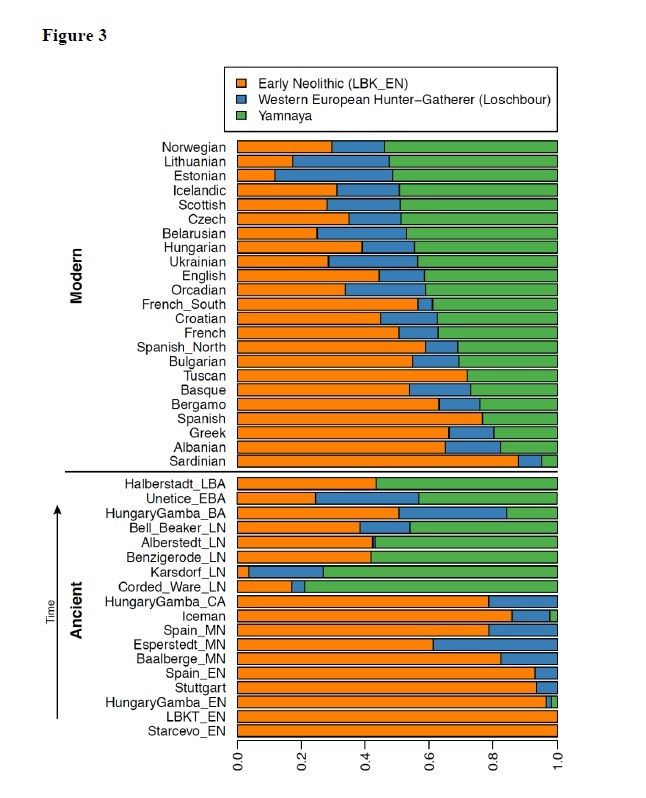Would this table had an explanation as the following below?
1: Most of Early Neolithic (9,000 years) - were already populated and lived (majority) at the current modern populations (and locations) such as: Sardinian, Tuscan, Greek, Albanian, Bergamo, Spanish, South French, Basque, Bulgarian, Croatian. it looks like, more
south is more ancient. Doesn't that explain that all the R1b or R1a expansion came much later to Europe?..then it would look like the R lineage came from central Asia above the baltic and through steppe as Maciamo noted (and not through Asia minor). and J2 migrated even much later towards Europe?
Then would anyone argue
which is the major Y Dna in these south regions already within early Neolithic?
2. There are 2 hypothesis for the
roots of indoEuropean language (9,000 years): north of Black sea and
south west Anatolia....recent study is pretty conclusive about the south west Anatolia. This might correlate with migrations and Cultures spreading from south west Anatolia to east forming
Mesopotamia (5,000 years) and west possibly forming
Vinca Culture (7,500 years)?
I suppose after migration to Mesopotamia, at the same time another big migration went through Caucus above Black Sea and through the Steppe around 5,000 years ago (Maciamo noted 4,000 years ago) (probably majority of R1b and R1a)
Now if this is correct then the predecessors of Hittites or Hittites from Anatolia might be R1b (in majority) and migrated through the steppe. But at the same time, hod did an R1b1 end up in Spain 7,000 ybp? maybe just an individual or individuals got there and not through some massive migrations
On the other side if there was a migration from south west Anatolia through
south east Anatolia years ago possibly forming Vinca culture, although there is no evidence yet that they spoke indo european. And it looks like Vinca scripts is Archaic and has no relation to PEI then it might be that Vinca culture is neither R* lineage
only possibility would be I2a1 G2a2 or E-V13?
http://pubman.mpdl.mpg.de/pubman/ite...kaert_2012.pdf
https://theoreticalecology.wordpress...nguage-family/




